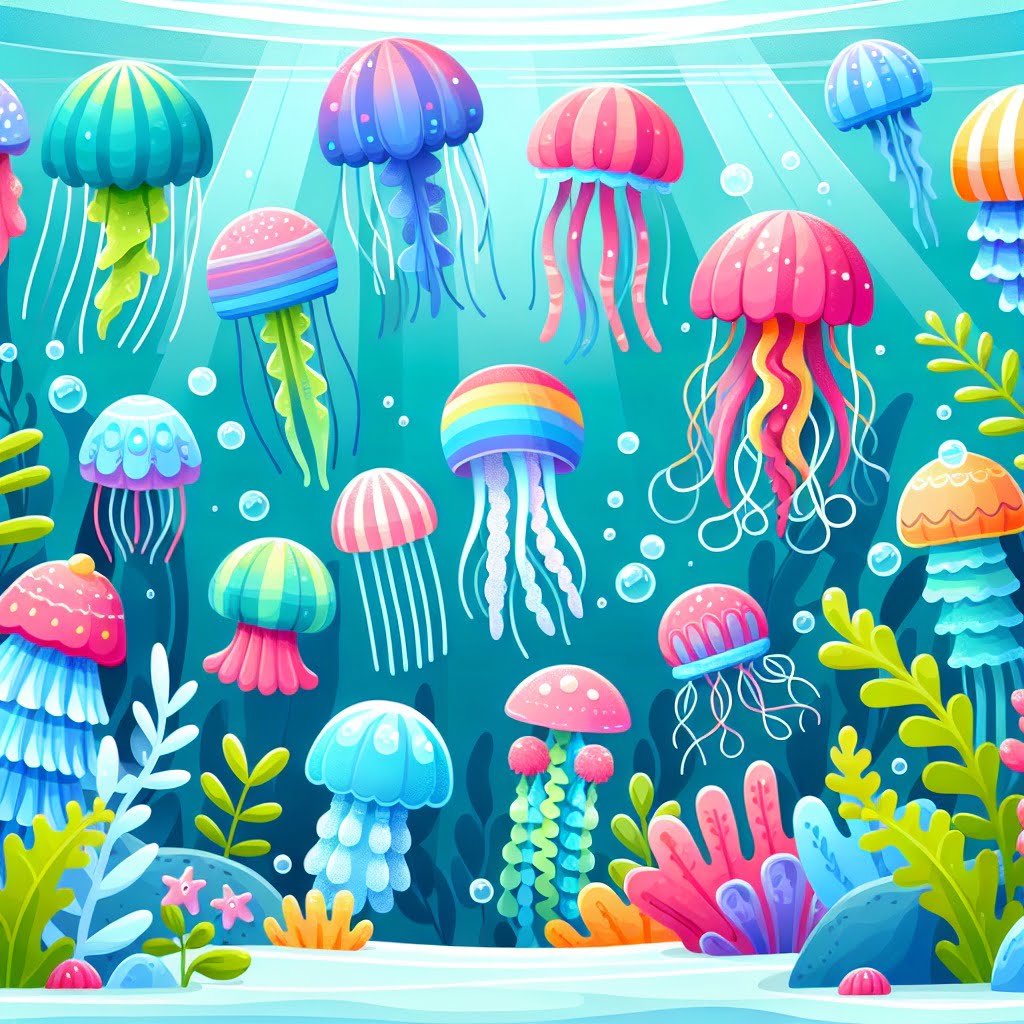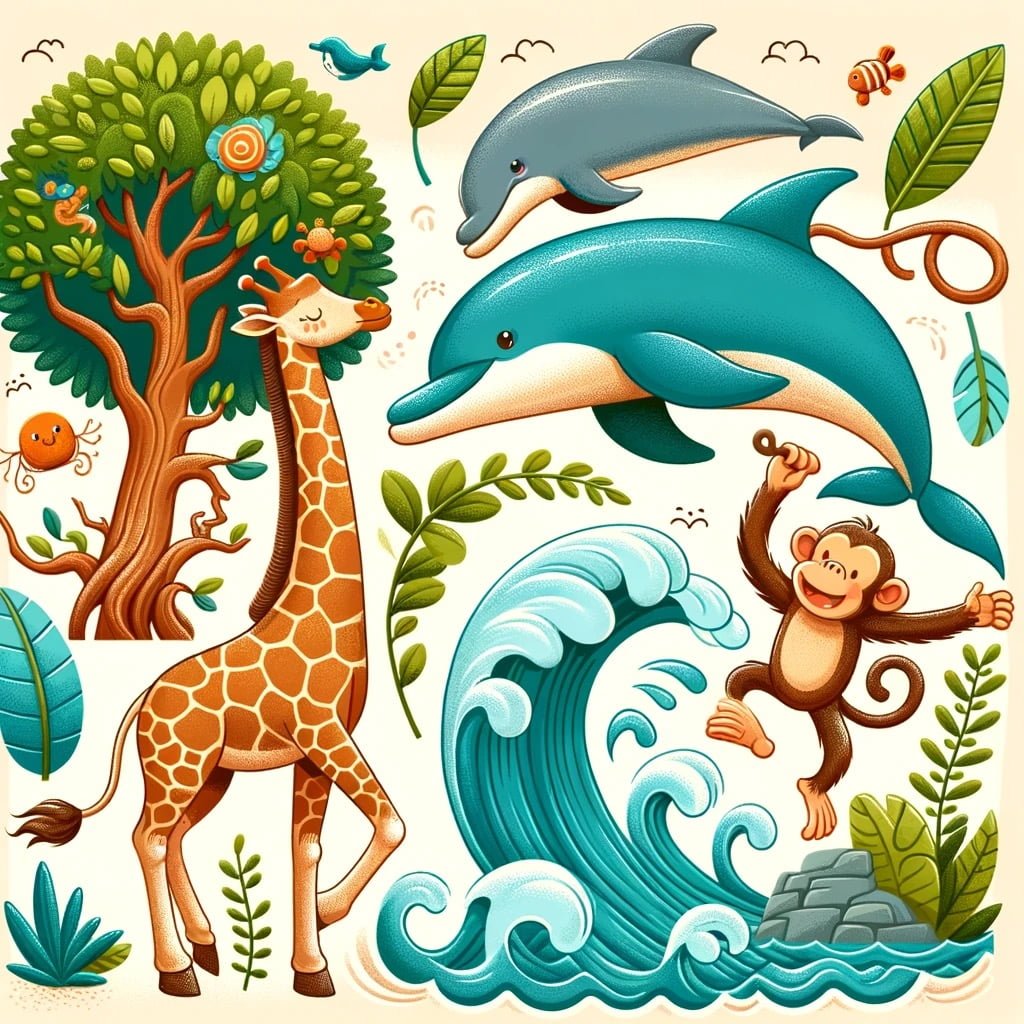Welcome to a fascinating exploration of Fun Facts for Kids About Sea Creatures! Dive into the enchanting world of sea creatures and discover the captivating behaviors and adaptations that make these marine animals truly remarkable. From sea otters holding hands while sleeping to dolphins calling each other by name, each fun fact offers a glimpse into the wondrous world beneath the waves. Join us on a journey of discovery as we uncover the intriguing secrets of the ocean’s most fascinating inhabitants. Let’s inspire curiosity, appreciation, and a love for marine life with these engaging and educational fun facts for kids about sea creatures. Get ready to be amazed and entertained by the wonders of the underwater realm as we delve into the extraordinary lives of these captivating creatures. Get ready to be fascinated by the enchanting world of sea creatures!
Fun Facts for Kids About Sea Creatures
1. Sea Otters Hold Hands While Sleeping
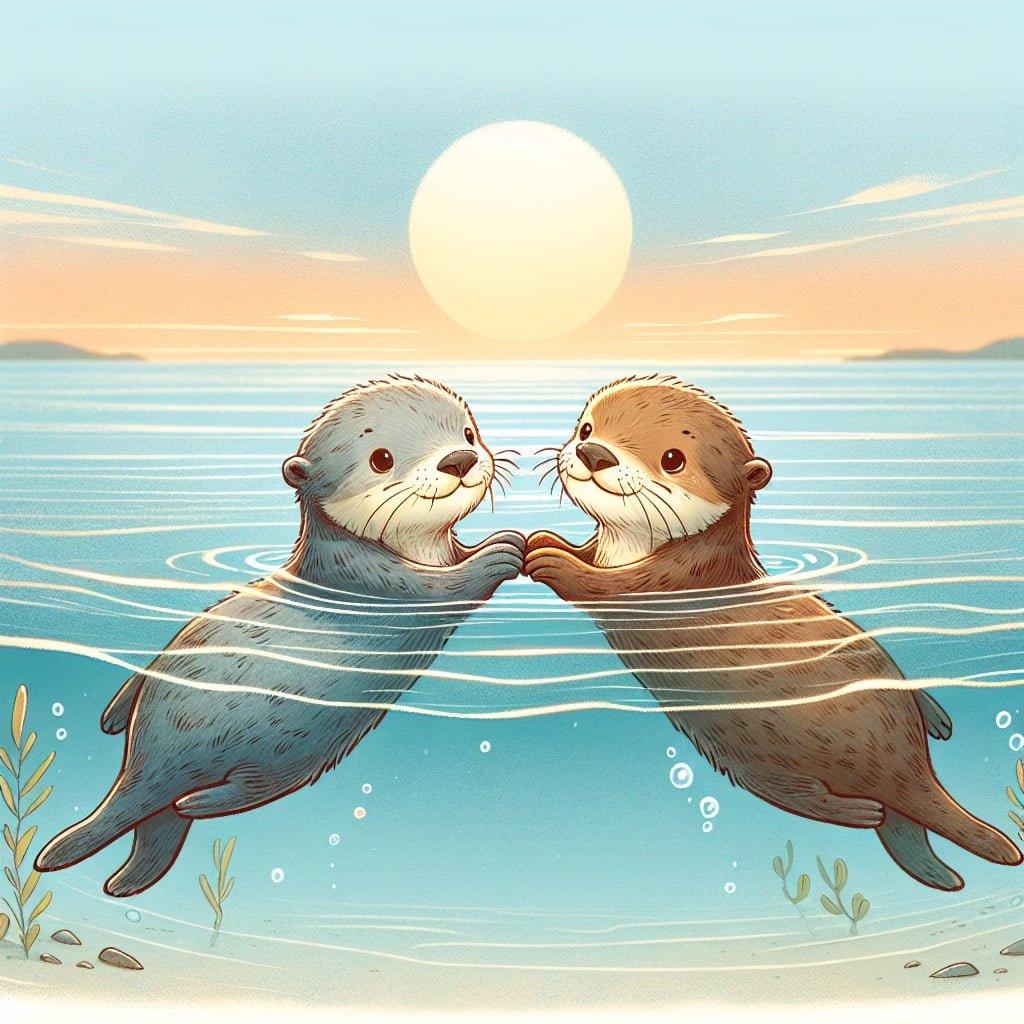
For younger kids: Sea otters love to hold hands with each other while floating in the water.
For older kids: Sea otters hold hands in groups called rafts to prevent drifting apart while they rest. This behavior showcases their strong social bonds and teamwork.
Detailed explanation:One of the most adorable and fascinating behaviors of sea otters is their tendency to hold hands while sleeping. This instinctive behavior is not just for cuteness, but serves a practical purpose in their daily lives. Sea otters are social animals that often float together in groups called rafts to stay safe and secure while they rest. By holding hands or clasping onto each other’s bodies, sea otters can prevent themselves from drifting apart while they sleep.
Sea otters are known for their playful and social nature, making this hand-holding behavior a fun and endearing sight for those lucky enough to witness it. It also helps to foster bonding and connection among members of the raft, creating a sense of security and camaraderie within the group.
In addition to holding hands while sleeping, sea otters also engage in other social behaviors such as grooming each other’s fur and playing games together. These interactions help to strengthen the bonds between individuals and contribute to the overall well-being of the group.
Overall, the fact that sea otters hold hands while sleeping is not only a charming aspect of their behavior, but also a reminder of the importance of social connections and cooperation in the animal kingdom. By studying and appreciating these fun facts for kids about sea creatures, we can gain a greater understanding of the fascinating world of marine life.
Fun Facts for Kids About Sea Creatures
2. Octopuses Have Three Hearts

For younger kids: Octopuses have more than one heart, and they use them to pump blood around their bodies.
For older kids: Unlike humans with one heart, octopuses have three hearts—one to pump blood through the body, and two to pump blood through the gills.
Detailed explanation:Octopuses are fascinating creatures of the sea, with many unique and interesting features that set them apart from other marine animals. One of the most intriguing facts about octopuses is that they have not one, not two, but three hearts. These three hearts work together to pump blood throughout the octopus’s body, ensuring that all of its tissues and organs receive the oxygen and nutrients they need to function properly.
The main heart, known as the systemic heart, is responsible for pumping oxygen-rich blood to the rest of the body. This heart is located in the center of the octopus’s body and is connected to the two branchial hearts, which are located near the gills. The branchial hearts pump oxygen-poor blood to the gills, where it picks up oxygen from the surrounding water before being pumped back to the systemic heart.
Having three hearts allows octopuses to efficiently circulate blood throughout their bodies, which is especially important given their soft bodies and lack of a rigid skeleton. This unique circulatory system helps octopuses to move quickly and agilely through the water, as well as to effectively regulate their body temperature in different environments.
In addition to their three hearts, octopuses also have blue blood, which is due to the presence of a copper-based molecule called hemocyanin instead of the iron-based hemoglobin found in human blood. This fun fact about octopuses is just one of many fascinating details about these incredible sea creatures that make them a favorite subject for scientific study and popular fascination. Fun Facts for Kids About Sea Creatures are abundant, and learning about the unique adaptions of octopuses is sure to captivate young minds and inspire a love for marine life.
Fun Facts for Kids About Sea Creatures
3. Clownfish Can Change Gender

For younger kids: Male clownfish can turn into females if needed in their group.
For older kids: In clownfish groups, if the dominant female dies, the dominant male will change into a female in order to maintain the social structure within the group.
Detailed explanation:One fascinating fact about sea creatures that often surprises many people is that clownfish have the ability to change gender. Clownfish are sequential hermaphrodites, meaning they can switch between male and female genders at different points in their lives.
Clownfish live in a hierarchical social structure within their groups, with one dominant female, one dominant male, and several subordinate males. If the dominant female dies or is removed from the group, the dominant male will often change gender and become the new dominant female. This process can happen relatively quickly, within a few weeks to a couple of months.
The gender change is not just a physical transformation, but also involves behavioral and physiological changes. The clownfish will develop female reproductive organs and start producing eggs. The clownfish that was once male will now take on the role of protecting the nest and caring for the eggs, while a subordinate male may then step up to become the new dominant male.
This ability to change gender is a unique adaptation that helps clownfish maintain their social structure and reproductive success. It ensures that there is always a female to lay eggs and a male to fertilize them in their groups. This fun fact about clownfish serves as a captivating example of the fascinating diversity and complexity of sea creatures. Learning about these unique behaviors can inspire curiosity and appreciation for the incredible adaptations that exist in the marine world.
Fun Facts for Kids About Sea Creatures
4. Sea Turtles Can Breathe through Their Bums
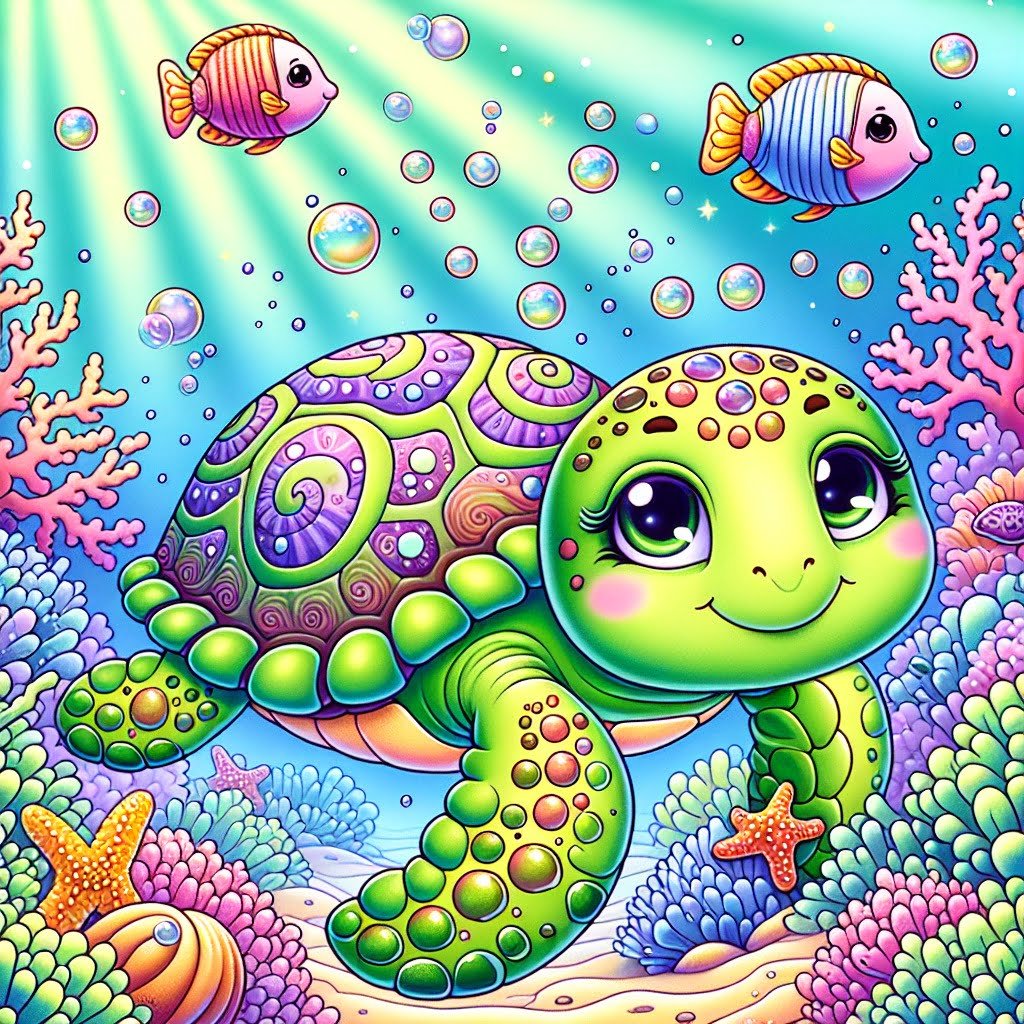
For younger kids: Sea turtles can breathe through their bums when they’re underwater!
For older kids: Sea turtles possess the ability to extract oxygen from water through their cloaca, a multipurpose opening used for excretion and reproduction.
Detailed explanation:Sea turtles are fascinating creatures with many unique adaptations that have allowed them to survive for millions of years. One of the most surprising facts about sea turtles is that they can actually breathe through their bums. This may sound bizarre, but it is actually a clever adaptation that helps sea turtles to conserve energy while diving for long periods of time.
Sea turtles have a specialized gland located near their cloaca, which is the opening where they excrete waste. This gland allows them to absorb oxygen from the surrounding water and release carbon dioxide, essentially allowing them to “breathe” through their rear end. This adaptation is particularly useful for sea turtles when they are diving for food or escaping predators, as it allows them to stay underwater for longer periods of time without having to come up to the surface to breathe.
In addition to their unique ability to breathe through their bums, sea turtles also have other amazing adaptations that make them well-suited for their marine lifestyle. For example, sea turtles have strong, streamlined bodies and powerful flippers that allow them to swim gracefully through the water. They also have a unique magnetic sense that helps them navigate long distances across the ocean.
Overall, sea turtles are truly remarkable creatures, and learning about their adaptations and behaviors can be both educational and entertaining. Fun facts for kids about sea creatures, like the fact that sea turtles can breathe through their bums, can help inspire a sense of wonder and appreciation for the natural world.
Fun Facts for Kids About Sea Creatures
5. The Mantis Shrimp has Hyperspectral Vision
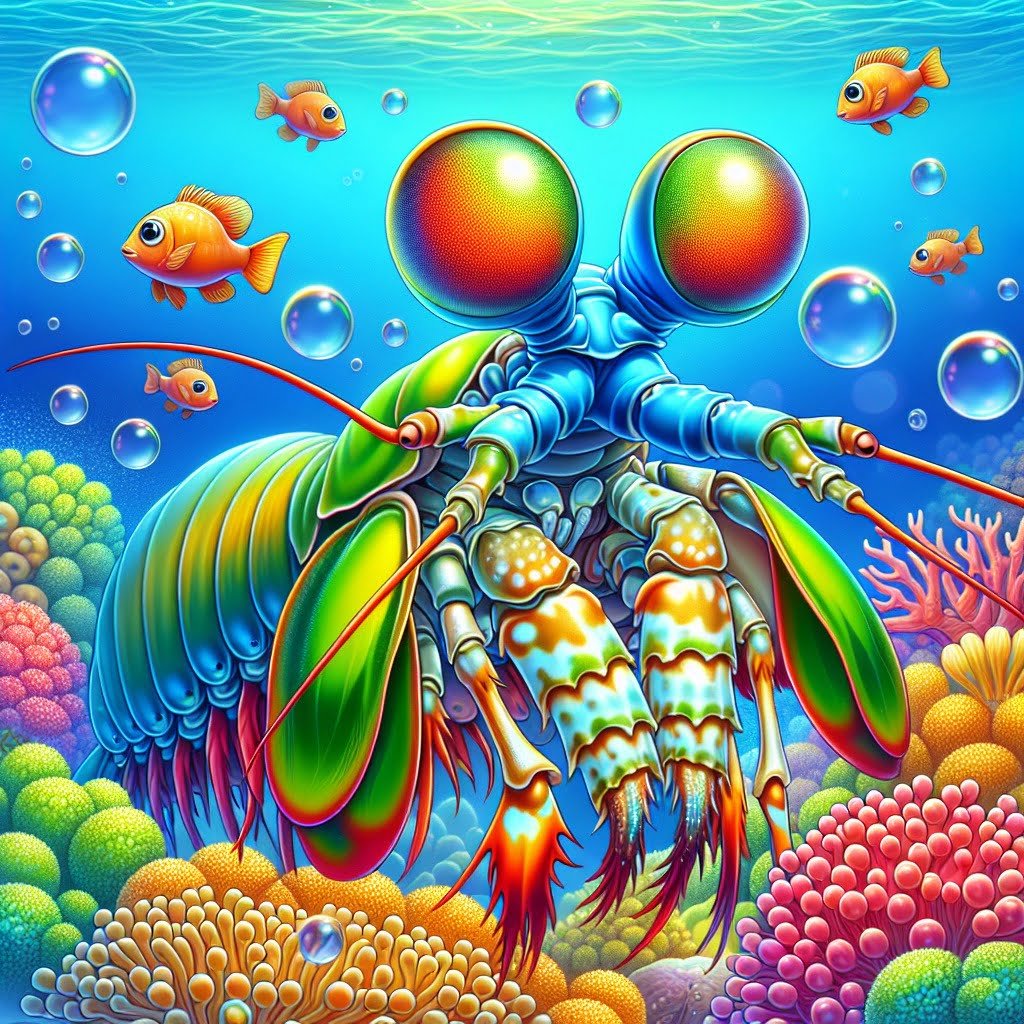
For younger kids: Mantis shrimps have the most powerful eyes in the animal kingdom!
For older kids: Mantis shrimps can see colors beyond the visible spectrum, with the ability to perceive ultraviolet and polarized light, making their vision incredibly complex and unique.
Detailed explanation:The Mantis Shrimp is a fascinating sea creature that possesses a unique ability known as hyperspectral vision. Unlike humans, who have trichromatic vision with three types of color receptors, mantis shrimp have a complex visual system with a staggering sixteen types of color receptors. This means that they can see a much broader range of colors than we can, including ultraviolet and polarized light.
This extraordinary ability allows mantis shrimp to perceive the world in ways that we can only imagine. For example, they are able to distinguish between different species of prey, as well as communicate with each other through intricate color patterns. Their hyperspectral vision also aids them in navigating their surroundings and detecting predators, making them incredibly skilled hunters and survivors in their ocean habitat.
One of the most incredible aspects of the mantis shrimp’s hyperspectral vision is its speed and accuracy. Their eyes are capable of processing visual information at an incredible rate, allowing them to react quickly to their environment. This is essential for a creature that relies on its vision for hunting and avoiding danger in the complex underwater world.
In conclusion, the mantis shrimp’s hyperspectral vision is truly a marvel of nature. By possessing such a unique and advanced visual system, these fascinating creatures are able to perceive the world in ways that are beyond our comprehension. Fun Facts for Kids About Sea Creatures like the mantis shrimp serve as a reminder of the incredible diversity and complexity of life in the ocean.
Fun Facts for Kids About Sea Creatures
6. Dolphins Call Each Other by Name

For younger kids: Dolphins have special sounds they use to talk to each other, almost like names!
For older kids: Studies have shown that dolphins use a signature whistle, similar to a name, to identify and communicate with each other within their pods.
Detailed explanation:Dolphins are highly intelligent and social animals that have been observed to exhibit remarkable behaviors, one of which is calling each other by name. This fascinating fact reveals the complex communication system that dolphins possess, allowing them to establish individual identities within their pod.
Each dolphin develops its own unique whistle, which serves as its “name” or signature vocalization. This whistle is used to communicate with other dolphins in the pod, conveying important information such as identity, location, and emotional state. Studies have shown that dolphins are able to remember and respond to the whistles of specific individuals, indicating a level of cognitive understanding and social bonding within the pod.
The ability of dolphins to call each other by name also highlights the importance of communication in their daily lives. Through these signature whistles, dolphins are able to navigate their social relationships, coordinate group activities such as hunting and traveling, and provide support and reassurance to one another. This level of communication and cooperation among dolphins is crucial for their survival and success in the marine environment.
Overall, the fact that dolphins call each other by name is a wonderful example of the incredible behaviors and capabilities of these sea creatures. It showcases their intelligence, social complexity, and unique communication skills, making them truly fascinating creatures to study and admire. Kids who are interested in learning more about sea creatures will surely find this fact about dolphins to be an exciting discovery in their exploration of the marine world.
Fun Facts for Kids About Sea Creatures
7. Humpback Whales Create Artistic Songs
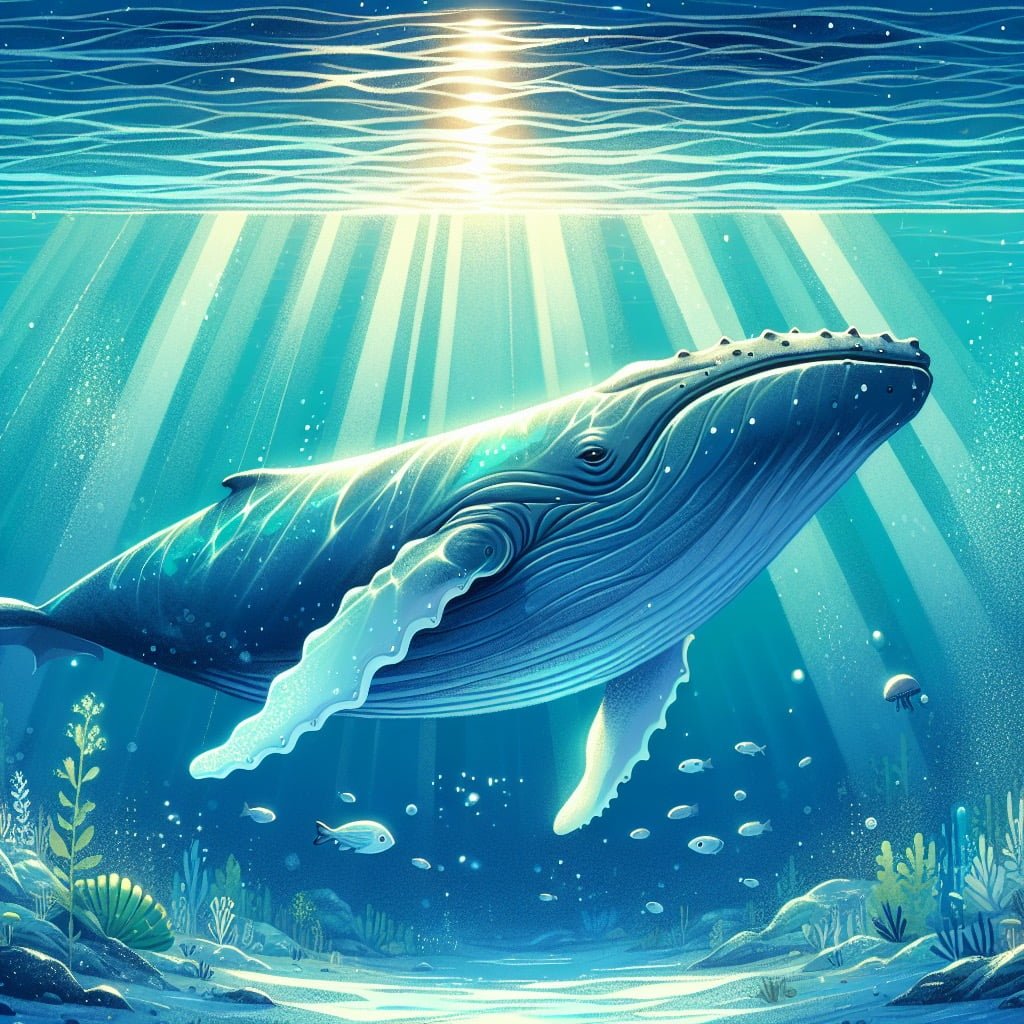
For younger kids: Humpback whales sing beautiful songs that can be heard underwater!
For older kids: Male humpback whales produce complex and evolving songs that can last for hours, which are thought to have cultural and social significance within their populations.
Detailed explanation:Humpback whales are known for their breathtaking and intricate songs, which are considered by many to be true works of art. These magnificent creatures can be found in oceans all around the world, and their melodic tunes have captivated scientists and music lovers alike for years.
One of the most fascinating aspects of humpback whale songs is their complexity and structure. Each song is made up of a series of sounds, known as units, which are repeated in different patterns and sequences. These units can include moans, cries, and even chirps, creating a rich and dynamic musical composition that can last for up to 20 minutes.
What makes humpback whale songs even more intriguing is the fact that they change and evolve over time. Researchers have found that whale populations in different regions sing slightly different songs, and these songs can also vary from year to year. This indicates that humpback whales have a cultural transmission of songs, passing them down from one generation to the next.
These mesmerizing songs are thought to play a crucial role in humpback whale communication and mating rituals. Male humpback whales are known to sing their intricate songs during the breeding season, possibly to attract females or establish dominance among other males.
In conclusion, the artistic songs of humpback whales are a truly remarkable phenomenon that showcases the intelligence and creativity of these magnificent sea creatures. Studying and appreciating these songs not only provides valuable insights into humpback whale behavior, but also offers a fascinating glimpse into the world of marine biology. Fun Facts for Kids About Sea Creatures like humpback whales can inspire awe and wonder in people of all ages.
Fun Facts for Kids About Sea Creatures
8. The Mimic Octopus Can Imitate Other Creatures
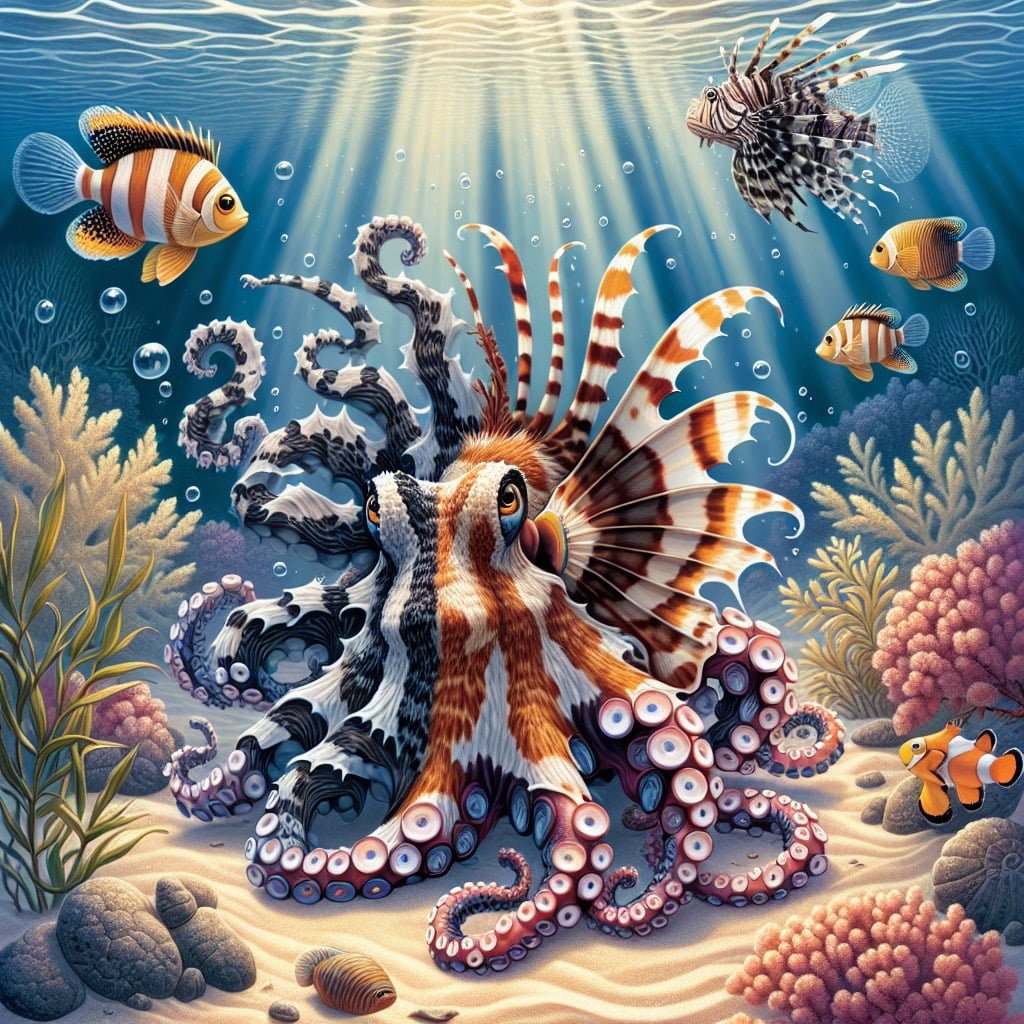
For younger kids: The mimic octopus can change its shape and colors to look like other animals!
For older kids: The mimic octopus is a master of disguise, capable of mimicking the appearance and movement of various sea creatures to avoid predators and capture prey.
Detailed explanation:The mimic octopus, also known as Thaumoctopus mimicus, is a fascinating creature that has gained attention for its remarkable ability to imitate other sea creatures. This highly intelligent cephalopod can change its color, texture, and body shape to mimic a variety of animals, including lionfish, sole fish, and even sea snakes. This incredible camouflage ability allows the mimic octopus to blend in seamlessly with its surroundings, providing it with both protection from predators and a means of hunting for prey.
One of the most impressive displays of mimicry by the mimic octopus is its ability to imitate multiple animals in rapid succession. For example, if it encounters a predator such as a damselfish, the mimic octopus may first imitate a banded sea snake to scare off the predator, then quickly change its color and pattern to mimic a lionfish in order to confuse and escape from the threat. This ability to adapt to different situations by mimicking various sea creatures showcases the mimic octopus’s remarkable intelligence and survival instincts.
Studying the mimic octopus and its mimicry abilities can provide valuable insights into the evolution of camouflage and defense mechanisms in marine animals. By understanding how this fascinating creature uses mimicry to survive in its natural habitat, researchers can gain a better appreciation for the diversity and complexity of sea creatures. Fun Facts for Kids About Sea Creatures such as the mimic octopus serve as a great way to educate and inspire curiosity about the amazing world underwater.
Fun Facts for Kids About Sea Creatures
9. The Dumbo Octopus Flaps its Ears
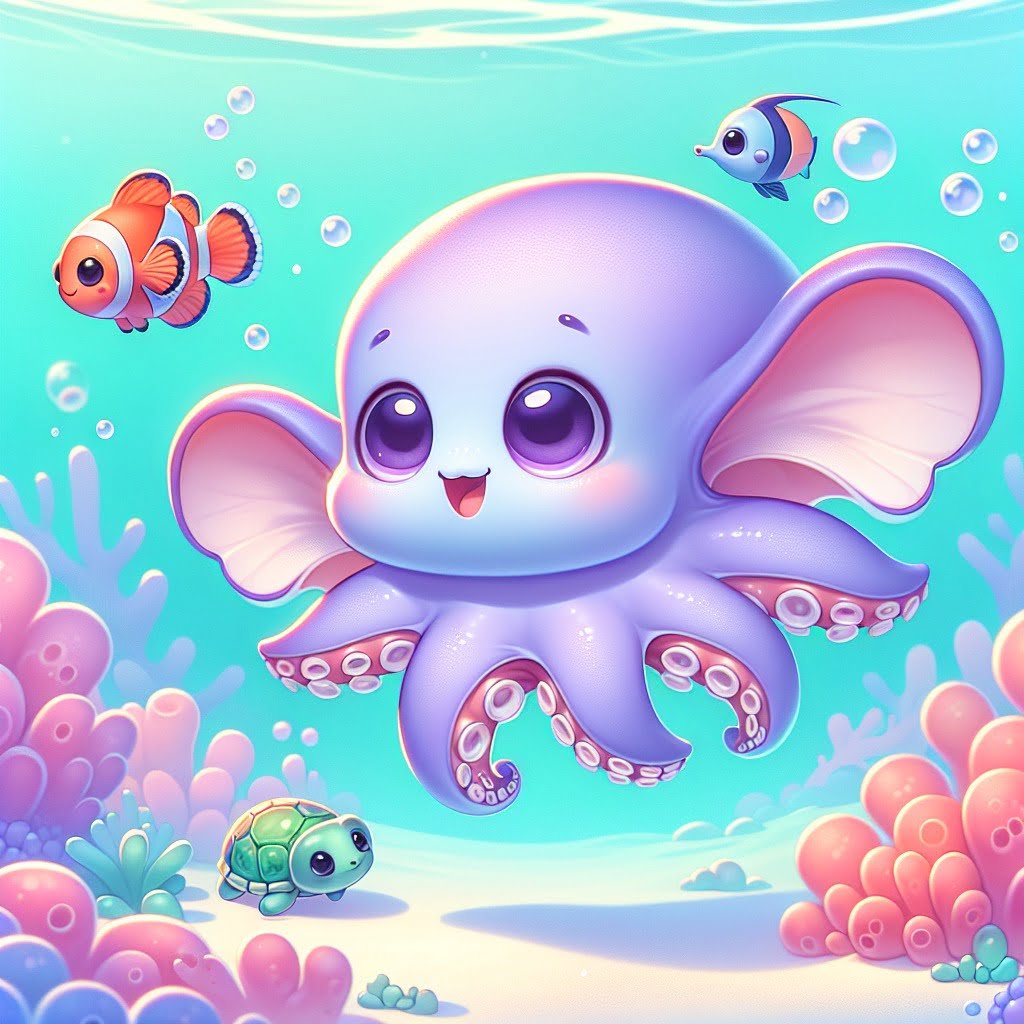
For younger kids: The dumbo octopus looks like a cute underwater elephant with flappy ears!
For older kids: The dumbo octopus has distinctive ear-like fins that it flaps to glide gracefully through the deep ocean waters, resembling the beloved Disney character Dumbo.
Detailed explanation:One of the most fascinating sea creatures found in the depths of the ocean is the Dumbo Octopus. Named after Disney’s lovable elephant character, this octopus has a unique and endearing characteristic – it actually flaps its ears!
The Dumbo Octopus, also known as Grimpoteuthis, is a deep-sea creature that belongs to the umbrella octopus family. This adorable creature has a round head, large eyes, and webbed tentacles that resemble Dumbo’s ears. These ear-like fins are not just for show – they actually help the Dumbo Octopus to move gracefully through the water.
Unlike other octopuses that use jet propulsion or swimming movements to navigate, the Dumbo Octopus relies on its ear-like fins to “fly” through the water. By flapping these fins, the Dumbo Octopus can easily maneuver and hover above the ocean floor, searching for prey such as small shrimp, crabs, and other crustaceans.
What makes this fact even more intriguing is that the Dumbo Octopus is a master of disguise. Its soft, gelatinous body allows it to change color and blend in with its surroundings, making it nearly invisible to predators. Despite its cute appearance and gentle demeanor, the Dumbo Octopus is a skilled hunter and a true marvel of the deep sea.
In conclusion, the Dumbo Octopus’s unique ability to flap its ear-like fins sets it apart from other sea creatures and showcases the incredible diversity of life in the ocean. These kinds of fun facts for kids about sea creatures can spark curiosity and inspire a love for marine life and the wonders of the underwater world.
Fun Facts for Kids About Sea Creatures
10. The Unique Flying Fish

For younger kids: Flying fish can glide above the water, like fish that can also fly!
For older kids: Flying fish have specially adapted fins that allow them to leap out of the water and glide over the surface. This helps them escape from predators and cover long distances in search of food. It’s like having their own mini air show in the middle of the ocean!
Detailed explanation:When it comes to fun facts for kids about sea creatures, one of the most fascinating creatures to learn about is the flying fish. Flying fish are truly unique in the animal kingdom, as they have evolved the ability to glide above the surface of the water for considerable distances. This adaptation allows them to escape from predators and cover long distances in search of food or suitable habitats.
Flying fish have specially adapted pectoral fins that act like wings, allowing them to generate enough lift to glide through the air. They propel themselves out of the water by beating their tail against the surface, reaching speeds of up to 37 miles per hour. Once airborne, they can glide for distances of up to 200 meters, using their fins to steer and adjust their trajectory. Their streamlined body shape and lightweight scales also contribute to their ability to glide effectively.
Despite their impressive flying abilities, flying fish still rely on the water to survive. They use their fins to stay close to the surface, where they can easily dive back into the water to escape from airborne predators like birds. They are also strong swimmers, able to reach speeds of up to 35 miles per hour underwater.
Overall, the flying fish is a remarkable example of adaptation in the animal kingdom. Its unique flying ability allows it to thrive in its oceanic environment, and serves as a captivating example of the incredible diversity of life on Earth.
Did You Know?
Sea creatures, like the fascinating mimic octopus, showcase incredible adaptations and behaviors that continue to awe and captivate scientists and marine enthusiasts around the world.
‘
Sure, here is the edited text:
Summary of Fun Facts for Kids About Sea Creatures
Explore the amazing world of sea creatures with your child through a fun and educational journey filled with fascinating facts and captivating discoveries! From the colorful tropical fish to the graceful movements of dolphins and the mysterious depths where anglerfish lurk, the diversity of marine life will leave you in awe. By delving into the unique adaptations and behaviors of sea creatures, children can develop a deeper understanding of the interconnectedness of all living beings and the importance of conservation efforts. This blog post will spark wonder and curiosity in young minds, inspiring them to become environmental stewards and advocates for marine life. Dive into the wonders of the marine world and uncover the incredible secrets waiting to be discovered!
Sources and additional information for Fun Facts for Kids About Sea Creatures
WikipediaBritannicaSan Diego Zoo KidsThe Smithsonian InstitutionDK Find Out!Australian MuseumWorld Wildlife FundThe Nature ConservancyAnimal PlanetMonterey Bay AquariumPBS NatureSmithsonian’s National Zoo & Conservation Biology InstituteWorld Wildlife FundAnimal Diversity Web (University of Michigan)IUCN Red List of Threatened SpeciesThe Cornell Lab of Ornithology – All About BirdsNational Audubon SocietyEncyclopedia of LifeSeaWorld Parks & EntertainmentAustralian Museum – AnimalsEncyclopedia of Life

